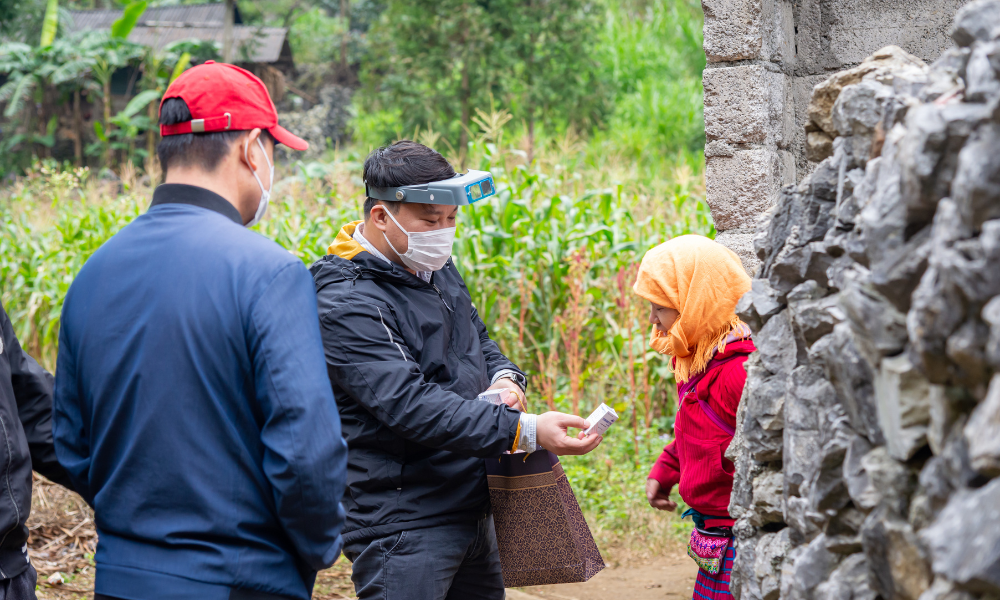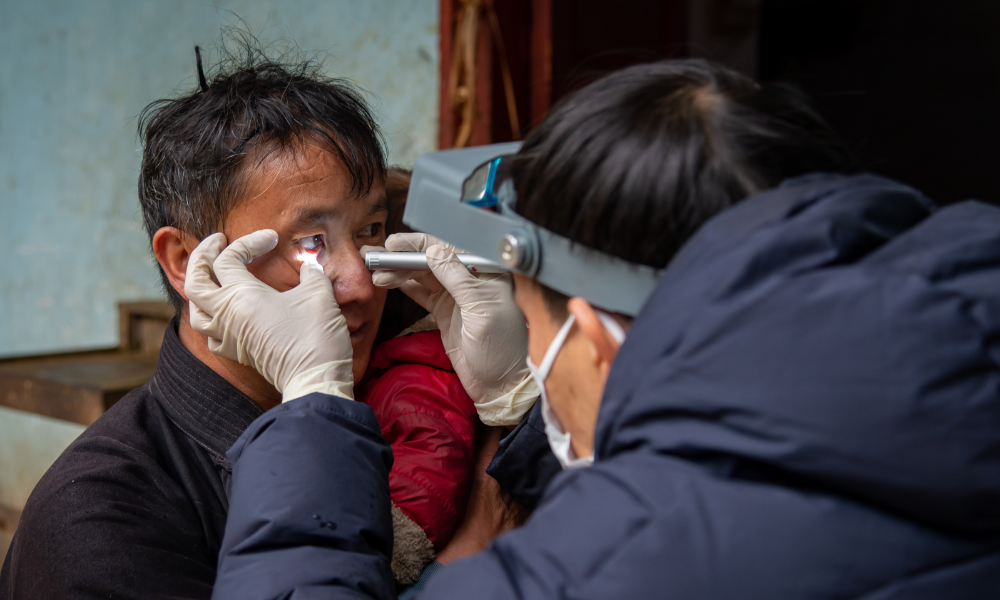Visiting the most remote communities in Vietnam’s far north, a team of medical experts embarked on an important mission to look for signs of trachoma – a neglected tropical disease that causes blindness when left untreated.
The dedicated team composed of a doctor, a nurse, a commune health station staff, and a village health worker spent two weeks treading the harsh terrain of Ha Giang Province, a mountainous area along the border with China. The teams made house visits, examining local communities to look for signs of trachoma infection.
After several years of treatment for trachoma in Meo Vac and Dong Van, two districts in Ha Giang, the community is suspected to be no longer at risk for the disease. These disease surveys help monitor progress and assess whether any additional efforts are needed
Conducted by the Vietnam National Eye Hospital (VNEH) and Ha Giang Provincial Eye Hospital, the surveys are among the final steps to ensure that Vietnam has finally eliminated trachoma as a public health problem.
The results of the surveys were promising. Dr Ninh Van Hien, an ophthalmologist from Ha Giang Eye Hospital who has been with the trachoma program for more than 8 years, was filled with optimism.
"We do hope that Vietnam will soon announce the elimination of trachoma according to the procedures of the World Health Organization (WHO). This is an important achievement for Vietnam. The efforts to eliminate trachoma over the past 10 years in Ha Giang were meaningful, contributing significantly to improve the quality of eye care services for local people, and gradually improving people’s lives,” he said.
Dr Bui Van Xuan of Vietnam Eye Hospital agreed: “When the Vietnam trachoma elimination dossier is approved by the WHO, it will elevate the standing of Vietnam’s health sector in general, and in particular its eye health care system.”
It was a long journey to get to this point. In the 1990s, trachoma was one of the leading causes of preventable blindness in Vietnam. The disease was especially prevalent in mountainous and remote places like Meo Vac and Dong Van, where there was poor access to clean water.
In 2010, the Vietnamese government set a national target to eliminate trachoma as public health problem. With support from USAID’s Act to End NTDs | East program, implemented by The Fred Hollows Foundation and RTI International, Vietnam has supported the delivery of treatment to those at risk for the disease, surveys to monitor progress, and documentation of their successes as they work toward elimination of the disease. Vietnam has been a leader in the elimination of neglected tropical diseases, having eliminated lymphatic filariasis in 2018. Now, they look to do the same for trachoma.

The survey team conducts a household visit to do an eye examination and collect information regarding water access and hygiene and sanitation practices.
Photo credit: The Fred Hollows Foundation
The improvement of social services also played a big part. Mr. Ly Chi Thanh, Director of the Meo Vac District Health Center, reflected on the changes in their area.
"Water is a matter of survival in this area, which is a Karst Plateau Global Geopark recognised by UNESCO. With an area of 2356.8 km² and an average elevation of about 1,400 – 1,600 m, the plateau has many limestone mountains and large slopes divided by valleys, rivers, and streams.”
“In recent years, the number of people suffering from trachoma has decreased a lot, not only because of the work of our health sector, but also the development of society as a whole. Infrastructure played a big part, as people now have better access to clean water, and they can now store rainwater easily,” he said while pointing to the rainwater tanks in the area.
Mr. Lê Quang Huy, a recorder from Ha Giang Eye Hospital shared: “I have participated in most trachoma surveys in Ha Giang in the last 10 years. It brings me joy that people with trachoma received proper treatment, and indigenous people have better health care.”
“Personally, I found myself changing a lot. Far from the comforts of my home and office in Ha Giang City, I rolled my sleeves and traveled through dangerous roads to visit remote villages” he said.
As the bus left Ha Giang to cap off this trachoma survey, the team was grateful for the incredible work that has been done in the last 10 years. They have overcome all obstacles, including extreme weather, difficult terrain, the COVID-19 pandemic, and the difficulties of organising surveys and drug distribution in Vietnam’s most geographically remote communities.
Despite these challenges, Vietnam is getting closer to the elimination of trachoma, a tremendous success for the health of the population.

A local resident has his eyes examined by an ophthalmologist from Ha Giang Eye Hospital, Dr. Ninh Van Hien.
Photo credit: The Fred Hollows Foundation.